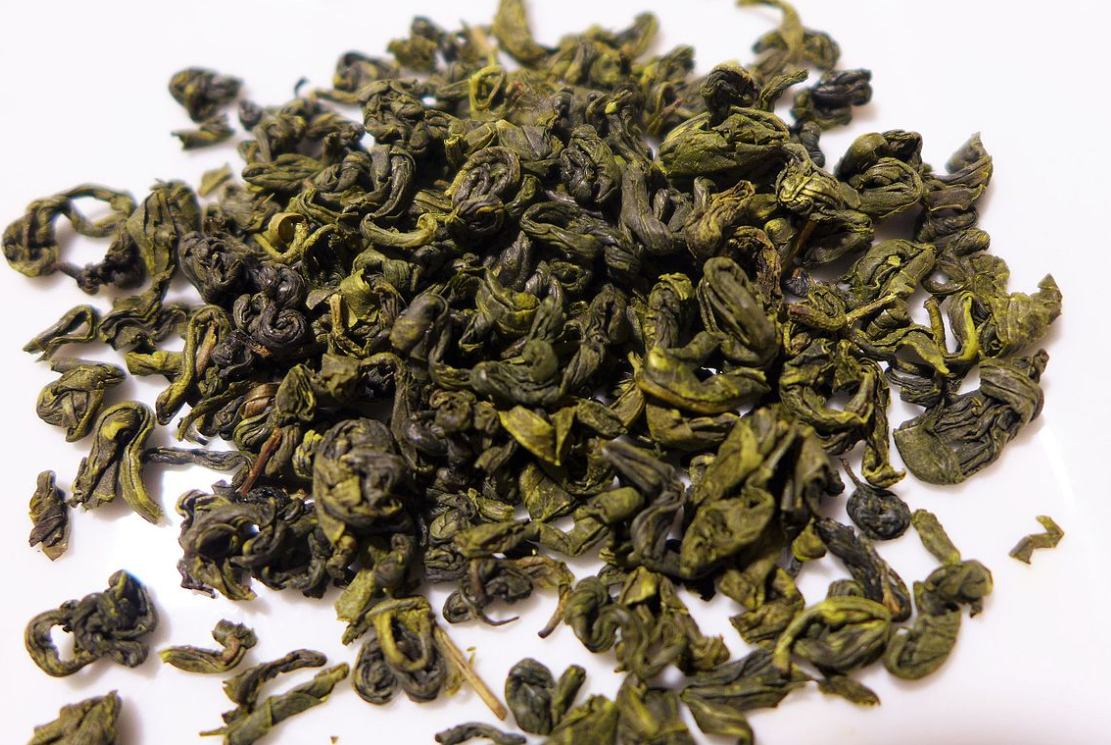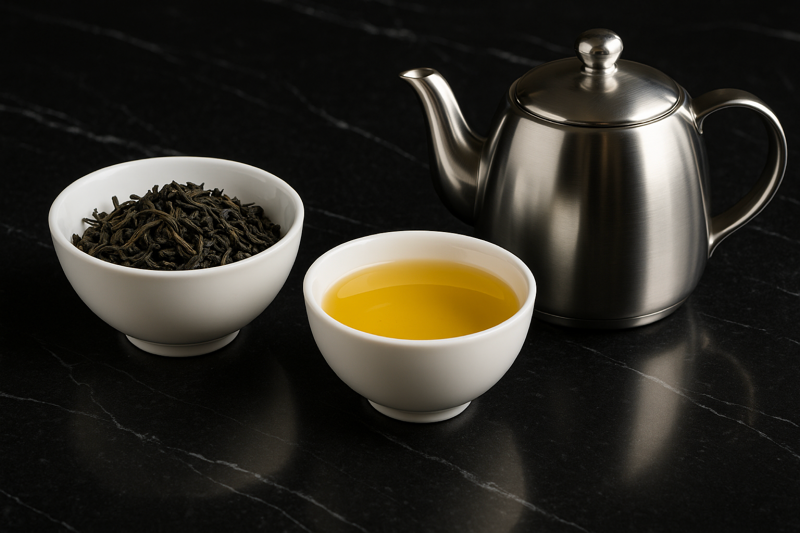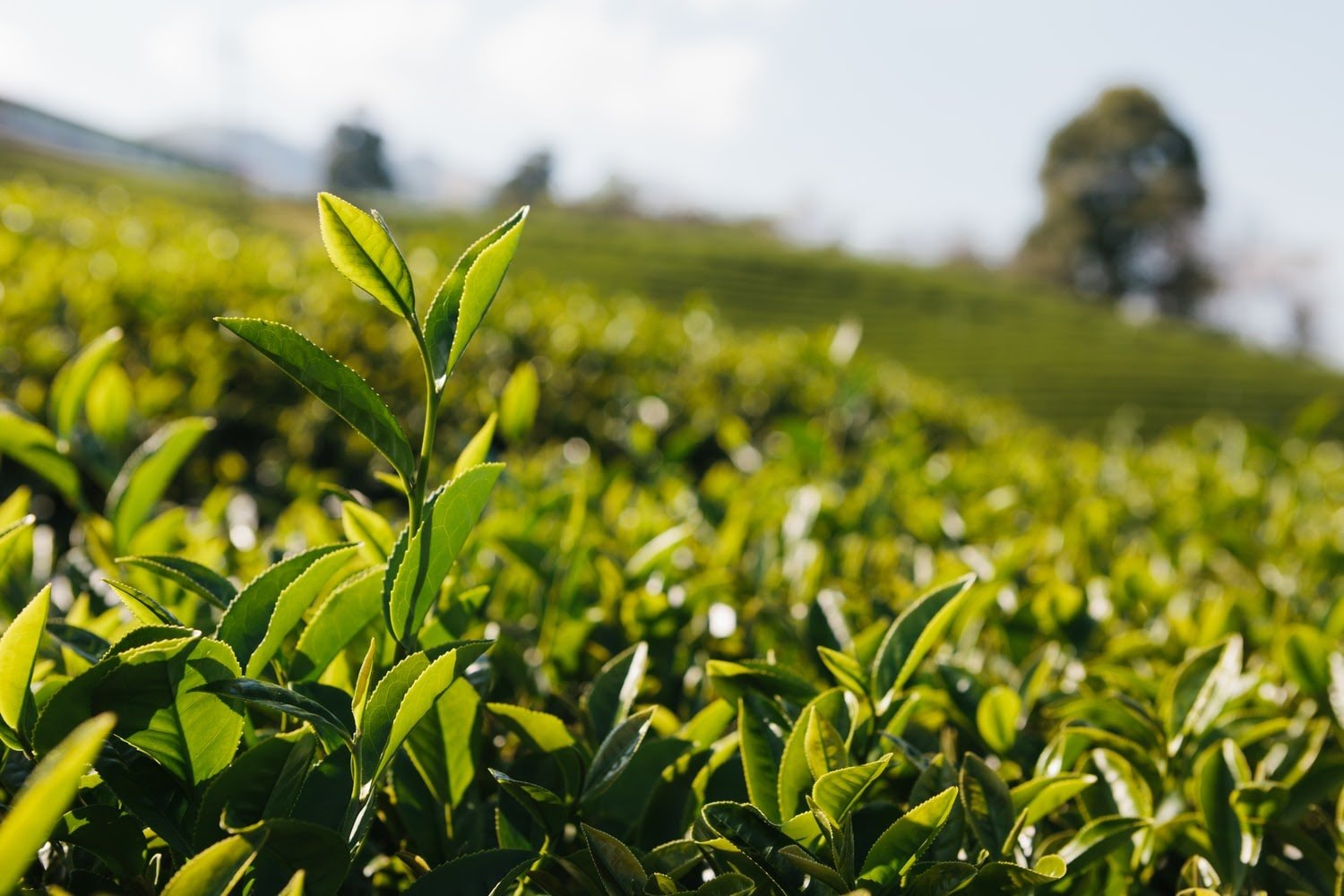Biluochun (Green Snail Spring
Fragrant, tender, and elegant — a spring treasure from China’s Jiangsu province.
- Category: Green tea (Camellia sinensis), pan-fired.
- Origin: China — Dongting Mountain, near Lake Tai, Jiangsu Province.
- Harvest: Early spring (first flush, usually before Qingming Festival in April).
- Grade: Supreme Biluochun, High-grade Biluochun, Commercial-grade Biluochun



Tasting Profile
Brewing Guide
- Tea-to-water ratio~3–4 g leaves per 200 ml water.
- Water temperature75–80 °C (167–176 °F) to preserve delicate aroma and prevent bitterness.
- Steeping timeFirst infusion: 1–2 minutes; subsequent infusions: 30–60 seconds.
- Infusions2–3 infusions; first is fragrant and delicate, second highlights fruitiness, third is lighter and mellow.
Background & Story
Biluochun, often translated as “Green Snail Spring,” is one of China’s most treasured green teas, famed for its tightly curled leaves and intoxicating floral-fruity aroma. Originating from the Dongting Mountain region near Lake Tai in Jiangsu Province, Biluochun has been admired for centuries as a tea that captures the freshness and vitality of early spring.
The name “Biluochun” reflects its character: “Bi” means emerald green, “Luo” refers to the snail-like spiral of the hand-rolled leaves, and “Chun” signifies spring, when the tender buds are harvested. Its history is enriched with legend — it is said that the tea was originally called “Xia Sha Ren Xiang,” meaning “astoundingly fragrant,” because of its overwhelming aroma. During the Qing dynasty, Emperor Kangxi found the name too bold and renamed it Biluochun, giving it the elegant title it holds today.
Harvesting Biluochun is a painstaking process. The best teas are plucked in early spring before the Qingming Festival (early April), when the leaves are young, delicate, and full of nutrients. Typically, one bud and one leaf are picked together. The fresh leaves are then pan-fired to halt oxidation and rolled into their signature tight spirals, resembling small snail shells. This hand-rolling preserves their natural juices and locks in the floral-fruity fragrance that defines the tea.
Biluochun is renowned for its unique terroir. Tea bushes are interplanted with fruit trees such as apricot, peach, and plum, which impart a natural fruity sweetness to the tea leaves as they grow. This practice gives Biluochun its characteristic bouquet of floral and fruity notes, making it stand out among Chinese green teas.
Today, Biluochun remains one of China’s “Ten Famous Teas” and continues to be celebrated for its elegance, fragrance, and delicate taste. It is a tea that symbolizes refinement and the fleeting beauty of spring.
Benefits
- High in antioxidants that help protect cells and slow oxidative stress
- Supports heart health by aiding circulation and balancing cholesterol
- Provides calm focus through the synergy of L-theanine and caffeine
- Gentle on digestion with light, refreshing qualities suitable for daily drinking
- Rich in vitamins and minerals that help strengthen immunity and vitality
Serving Suggestions
Pairings
- Light seafood dishes such as steamed shrimp or scallops
- Fresh fruit, especially apricots, peaches, or pears
- Mild stir-fried greens like bok choy or spinach
- Dim sum items such as dumplings or spring rolls
- Light sponge cakes or mildly sweet pastries
Teaware
- Gaiwan (traditional Chinese lidded cup for delicate teas)
- Glass cup or teapot (to appreciate the unfurling spirals)
- Fairness pitcher (cha hai) for even pouring
Nutrition Facts
Serving Size: 1 cup brewed Biluochun (240 ml)
| Nutrient | Amount per Serving | % Daily Value* |
|---|---|---|
| Calories | 0 | 0% |
| Total Fat | 0 g | 0% |
| Sodium | 0 mg | 0% |
| Total Carbohydrates | 0 g | 0% |
| Protein | 0 g | 0% |
| Vitamin C | 3–6 mg | 5–8% |
| Vitamin A (beta-carotene) | Trace | <1% |
| Calcium | 2–4 mg | <1% |
| Potassium | 20–35 mg | <1% |
| Magnesium | 2–4 mg | 1% |
| Caffeine | 15–25 mg | — |
| L-theanine | 6–10 mg | — |
| Catechins (EGCG) | 25–45 mg | — |
| Polyphenols | 60–90 mg | — |
| Chlorophyll | Present (moderate-high) | — |
**Percent Daily Values are based on a 2,000 calorie diet.
† Functional compounds such as caffeine, L-theanine, catechins, polyphenols, and chlorophyll do not have established %DV but contribute to Biluochun’s delicate health benefits.